京仏壇 / 京仏具 京都府仏具協同組合
KYO-BUTSUDAN / KYO-BUTSUGUBUDDHIST ALTARS AND PARAPHERNALIA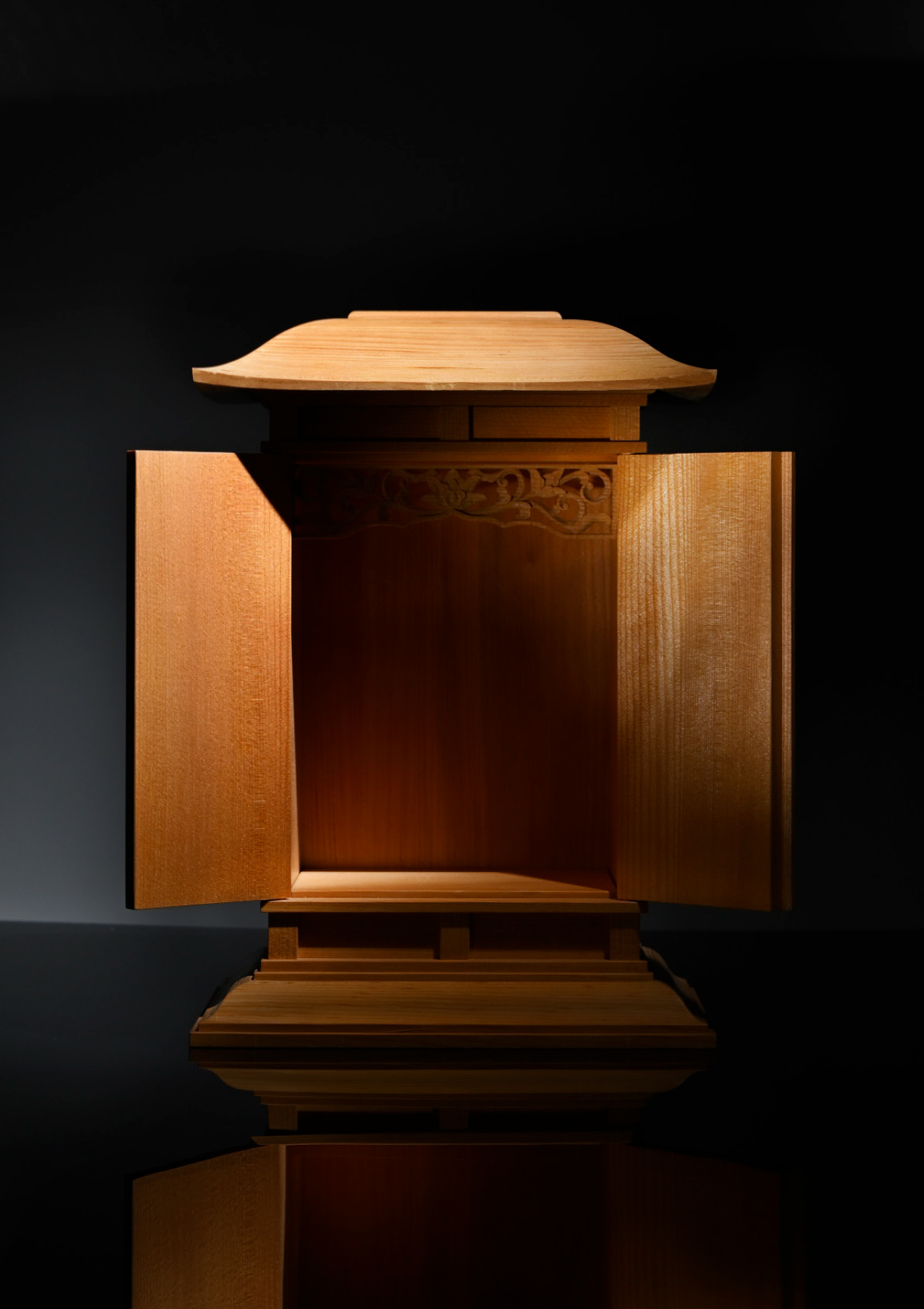 1
1
- 総檜の厨子。
寺院用仏具は奈良・平安時代から始まり、仏壇・仏具は、仏像や経典などを安置する厨子から発展したもので、江戸時代初期(17世紀)から一般家庭にも広がりました。仏教の各宗派の総本山が100以上ある京都で作られる仏壇・仏具は、格調の高さとともに深い精神性を備えていることから、古くから高い評価を得てきました。細かな分業体制が確立されていることが大きな特徴で、京仏壇・京仏具の製作者は、それぞれの部門を専門に受け持つ職人たちに仕事を振り分け、その技術を統合するプロデューサーのような役割を果たします。仏壇や木製仏具の本体を作る木地師、木彫りの装飾を担う彫師、仏像を彫刻する仏師、木地に漆塗りを施す塗師、漆塗りの表面を磨き上げる蝋色師、金箔を貼る箔押師、金属製の装飾を受け持つ錺師、漆の表面に文様を描く蒔絵師、岩絵具や泥絵具で絵を描いたり色を加えたりする彩色師などが部品を仕上げ、最後に組み立てて完成します。また、金属製仏具は鋳物師、彫金師、着色師などを経て完成します。近年、こうした伝統工芸の技術を複合的に用いての作品制作を希望するアーティストやデザイナーとの協業も増加しています。また、住空間に合うモダンな仏壇も多数生み出されています。
Buddhist altars for temples date back to the Nara and Heian eras. Later, miniature altars (zushi) were built to house statues of the Buddha and sutras, spreading into ordinary household use in the early Edo era (17th century). Kyoto is home to more than 100 main temples of each Buddhist sect, and the altars and sacred objects made in Kyoto have long been prized for their aesthetic magnificence and deep spirituality. A major feature of Kyo-Butsudan (Kyoto Buddhist altars) is an elaborate division of labor, with many highly specialized craftsmen working under the supervision of the head altar maker. A woodworker will construct the body of the altar while an engraver decorates the wood, one craftsman will apply lacquer while another polishes the surface, a guilder lays on golf leaf and a painter will add color with rock and mud paint. In addition, a variety of metalworkers will add their respective expertise in casting, engraving, coloring, etc. before the work is finally assembled and completed. In recent years more and more artists and designers are collaborating with traditional craftsmen. These new works combine contemporary design with traditional craft techniques, resulting in modern Buddhist altars which can be specifically created to suit individual living spaces.
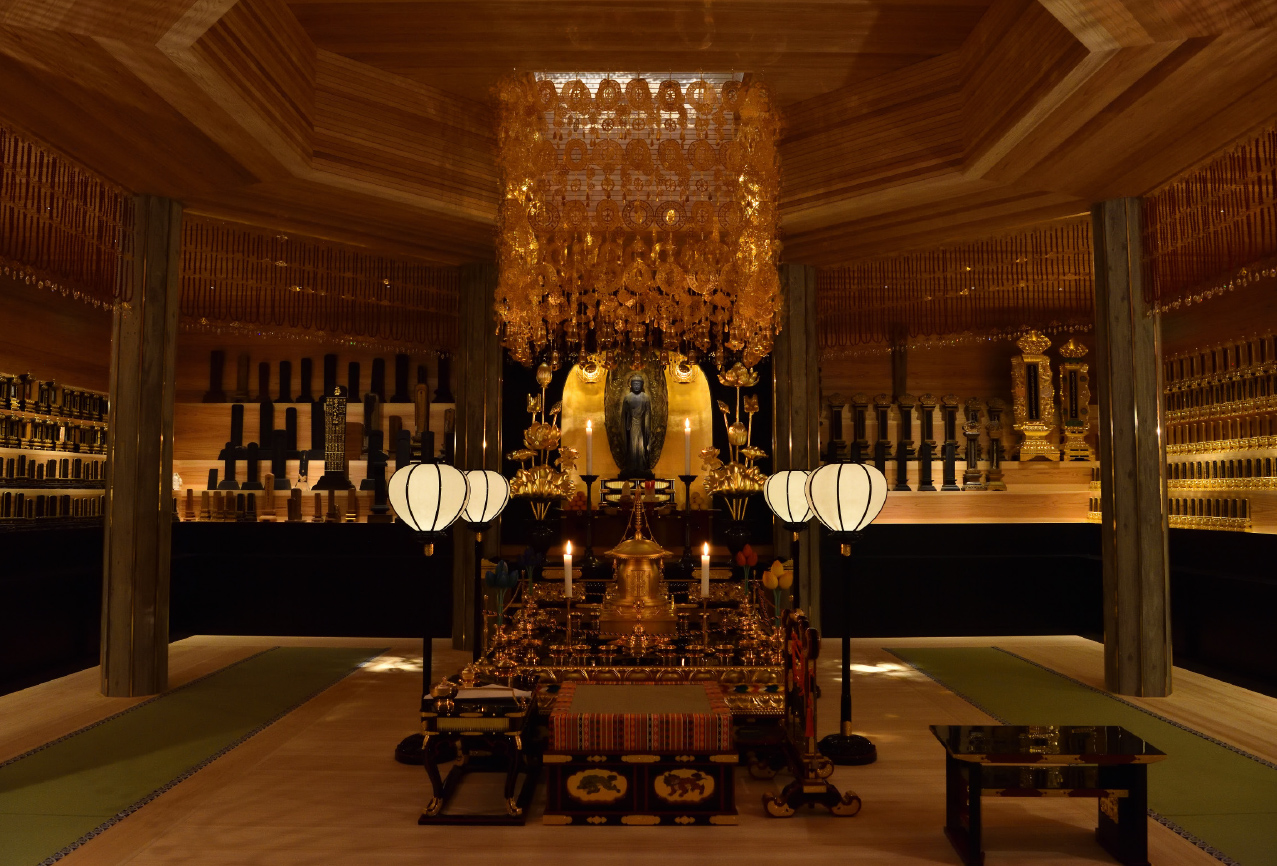 2
2
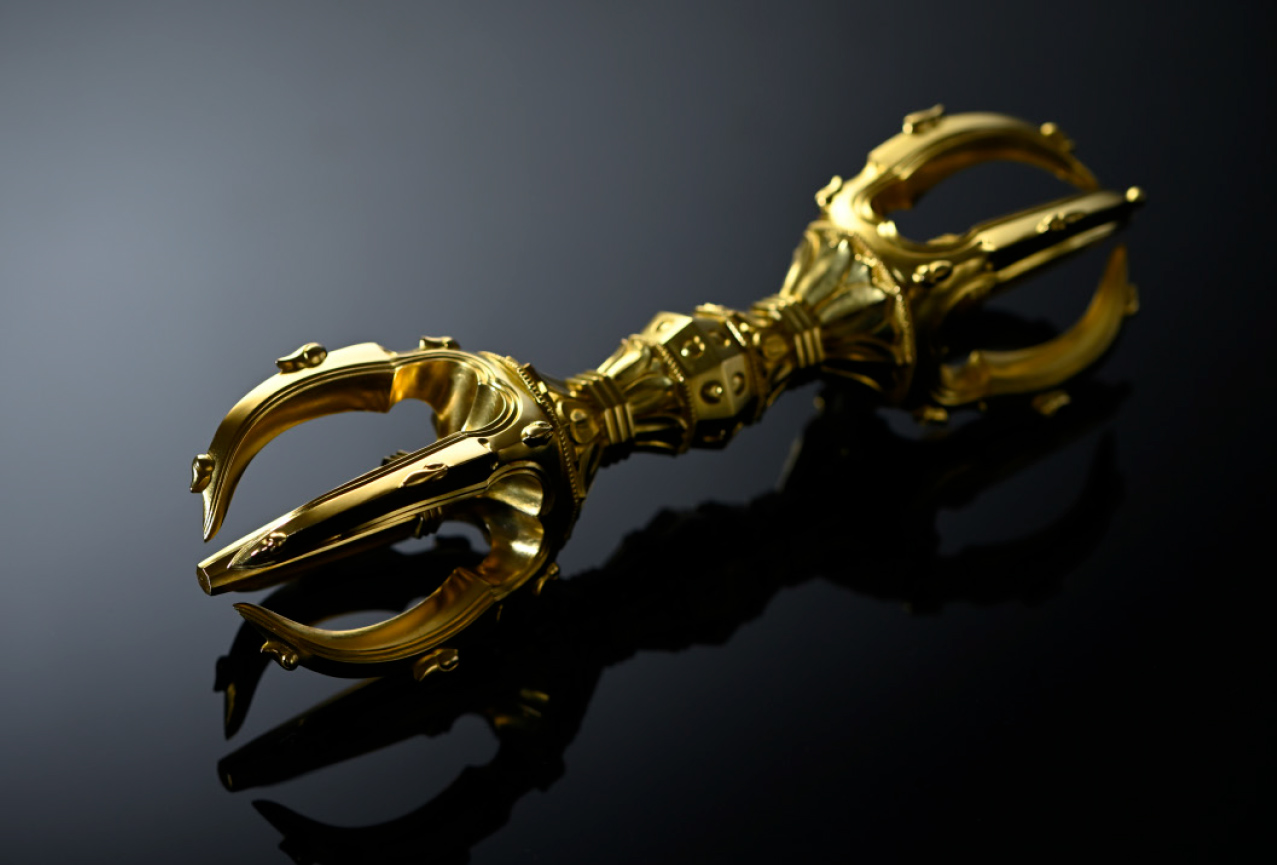 3
3
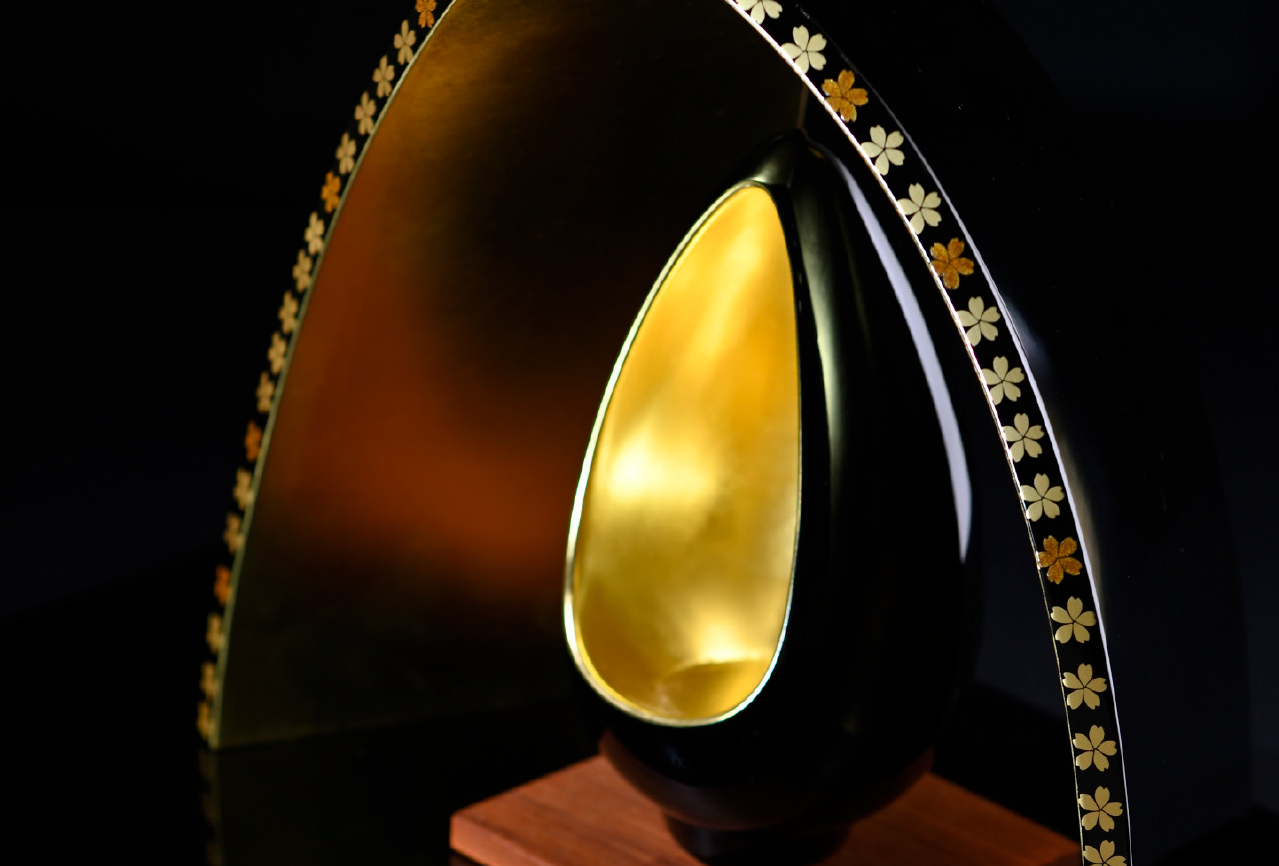 4
4
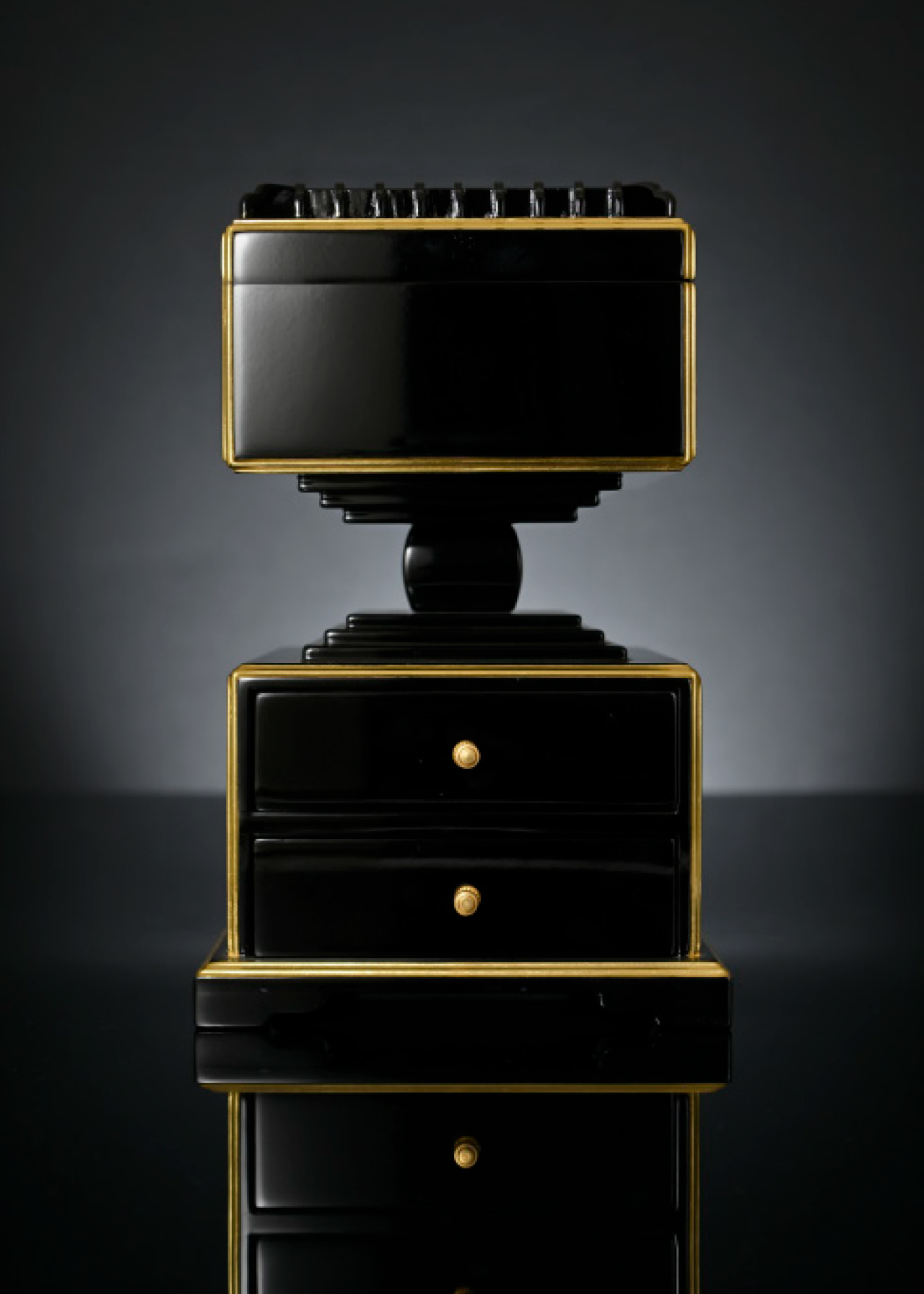 5
5
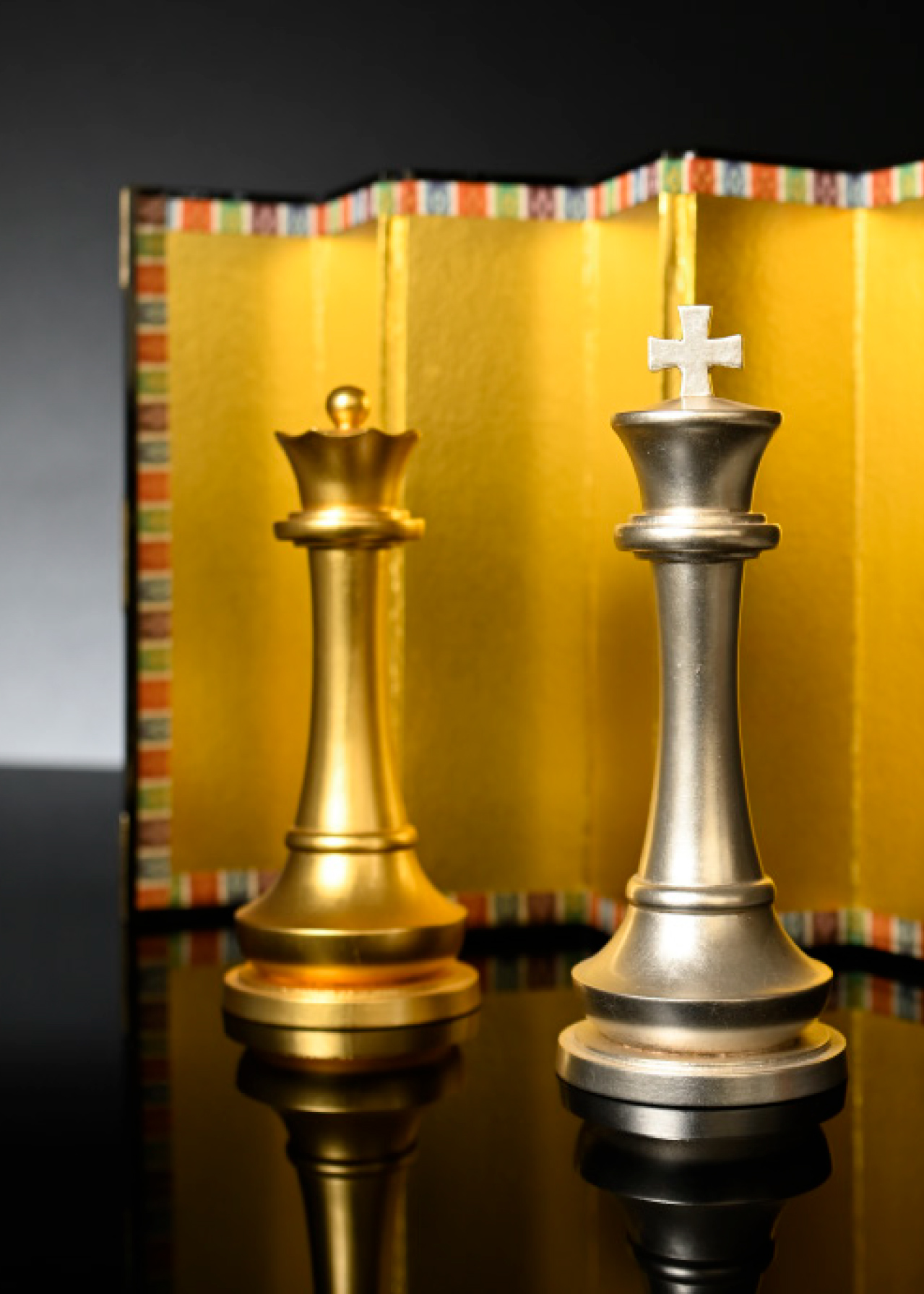 6
6
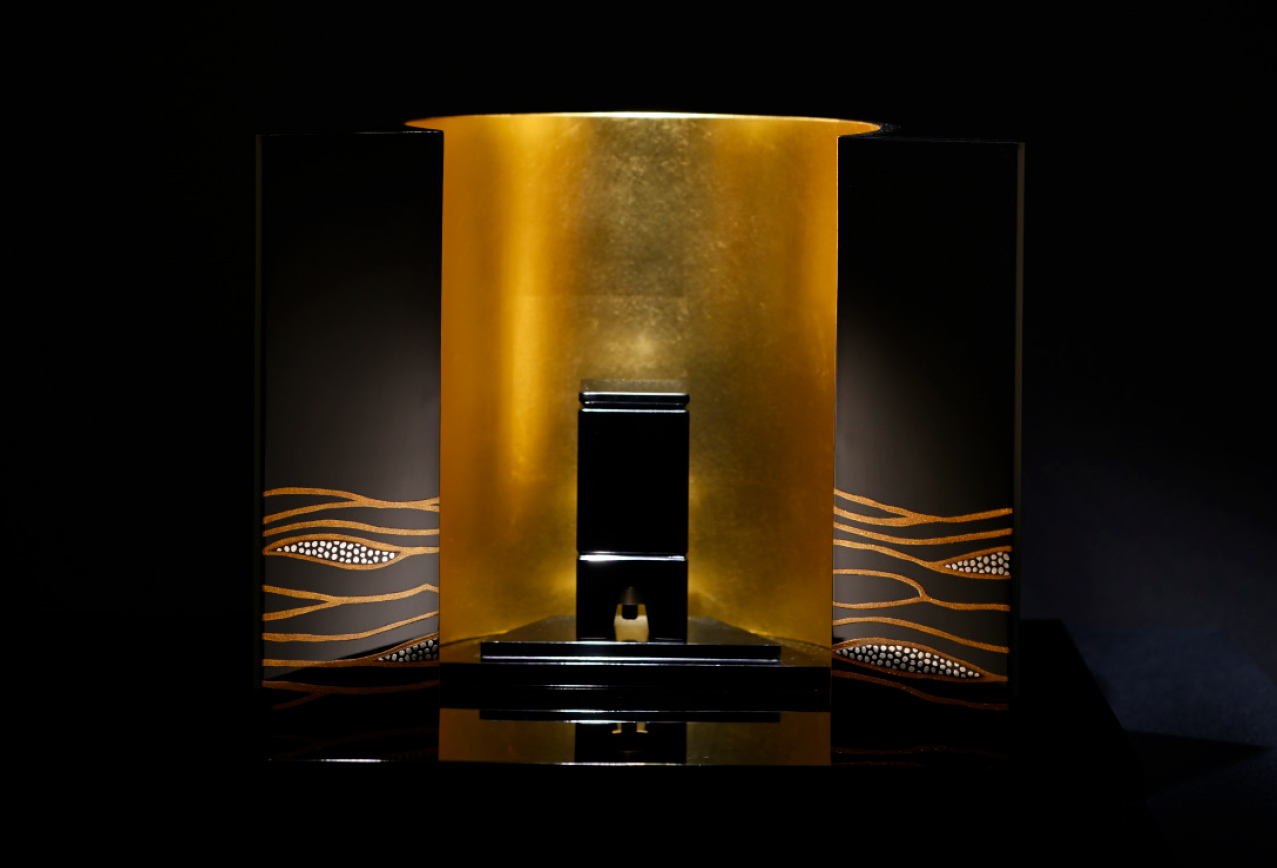 7
7
- :高知県竹林寺荘厳具。
- : 密教の代表的な法具「五鈷杵」。
- : 新デザイン仏壇「INORI」(外側)と「つつみ」(内側)。
- : モダンなデザインの香炉。
- : チェスのキングとクイーンをモチーフにした雛人形オブジェ。仏壇制作の伝統的な工法を活かして製作。
- : 新デザイン仏壇「OMEGA」(外側)と、形見を入れるおりん(内側)。
(1 株式会社若林佛具製作所 / 2,3,5,6 株式会社田中伊雅仏具店 / 4,7 京都府仏具協同組合)
1: A cypress miniature shrine. 2: Sogongu (holy equipment) at Chikurin Temple, Kochi Prefecture, Shikoku Island. 3: Gokosho, a pestle used in Esoteric Buddhism. 4: Inori, a contemporary Buddhist altar (outside) and Tsutsumi (inside). 5: A contemporary incense burner. 6: An object with a chess king and queen motif made using traditional methods of Buddhist altar craftsmanship. 7: Omega, a contemporary Buddhist altar. The inside has a bell (orin) containing a keepsake. (1 Wakabayashi Butsugu Seisakusho / 2,3,5,6 Tanaka Iga Butsuguten / 4,7 Kyoto-fu Butsugu Cooperatives)

